
Australian coins of the “Golden Nugget” series started to be minted in 1986. The reverse of the coins there were depicted large gold ingots found in Australia. They have specific names (the year of the find and the name is indicated under the image of the ingot). However, since 1989 the symbol of Australia, the kangaroo, has been depicted on the reverse. Up until 2007 this series of coins was called “The Australian Nugget”, and in 2008 it was renamed to “Australian Kangaroo”. The exception was the gold “The Australian Nugget” coin of 100 AUD, issued in 2011 to the 25th anniversary of this series.
Gold coins of the «The Australian Nugget» series
Year of minting 1986
- Face value: 50 Australian dollars
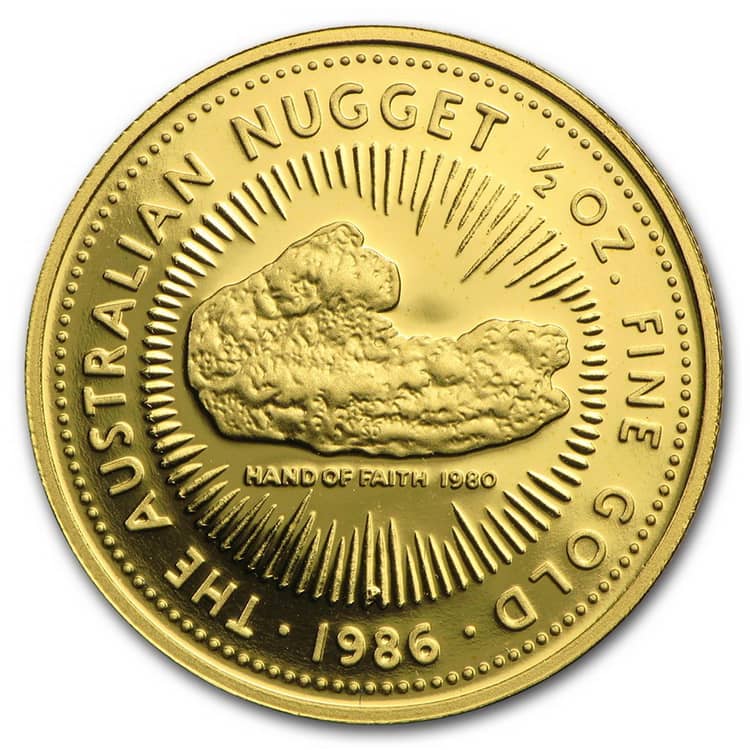
Year of minting 1987
- Face value: 50 Australian dollars.
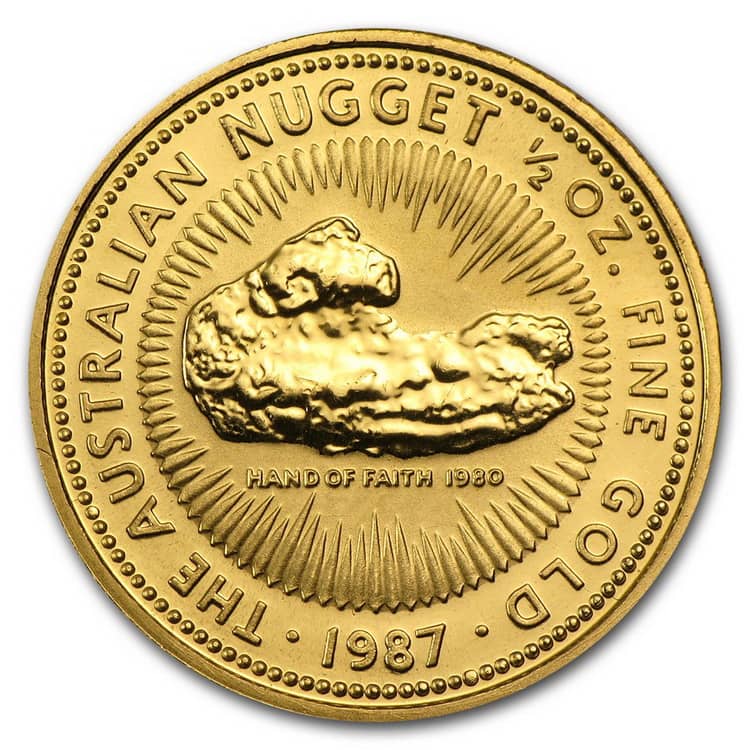
Year of minting 1988
Face value: 100 Australian dollars.
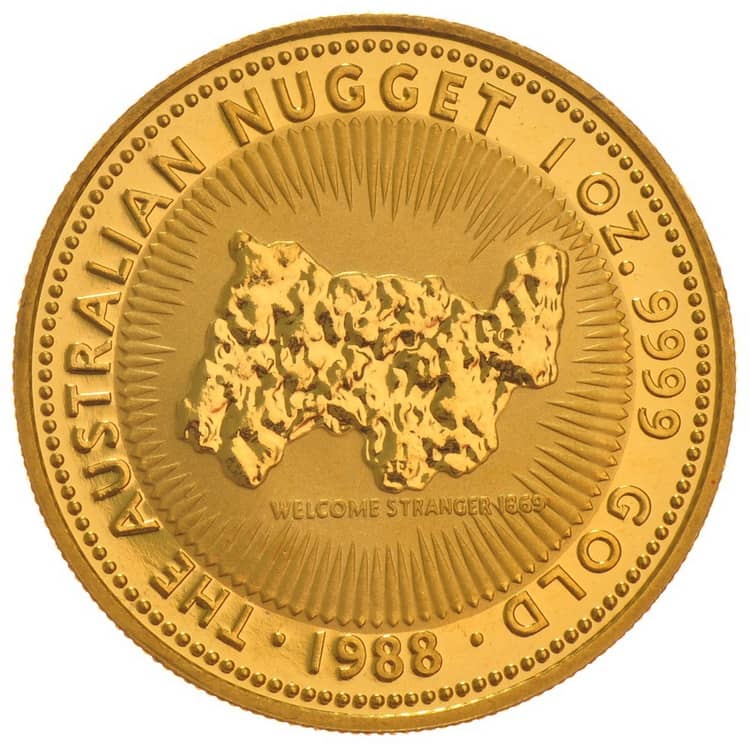
Year of minting 1989
Face value: 25 Australian dollars.
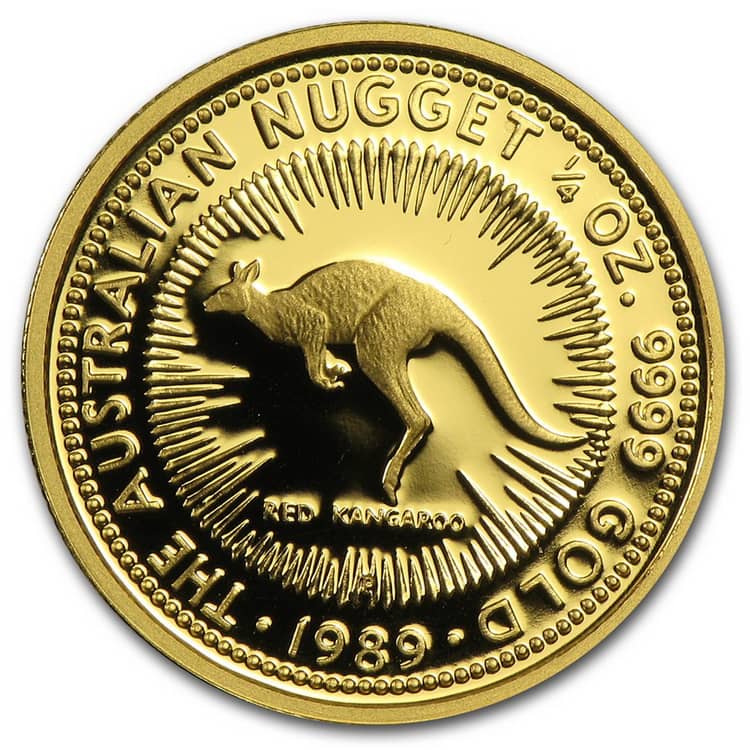
Year of minting 1990
Face value: 25 Australian dollars.
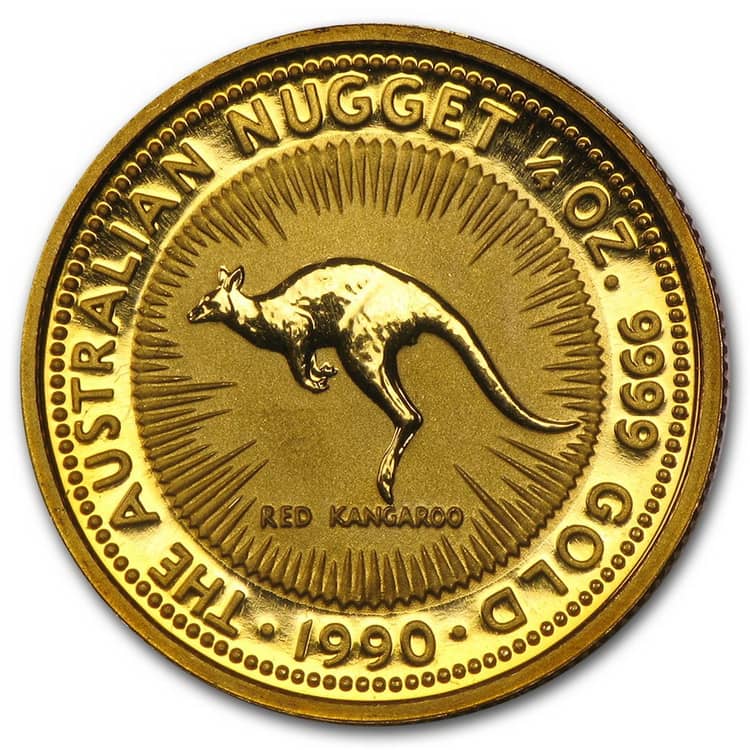
Year of minting 1991
Face value: 15 Australian dollars.
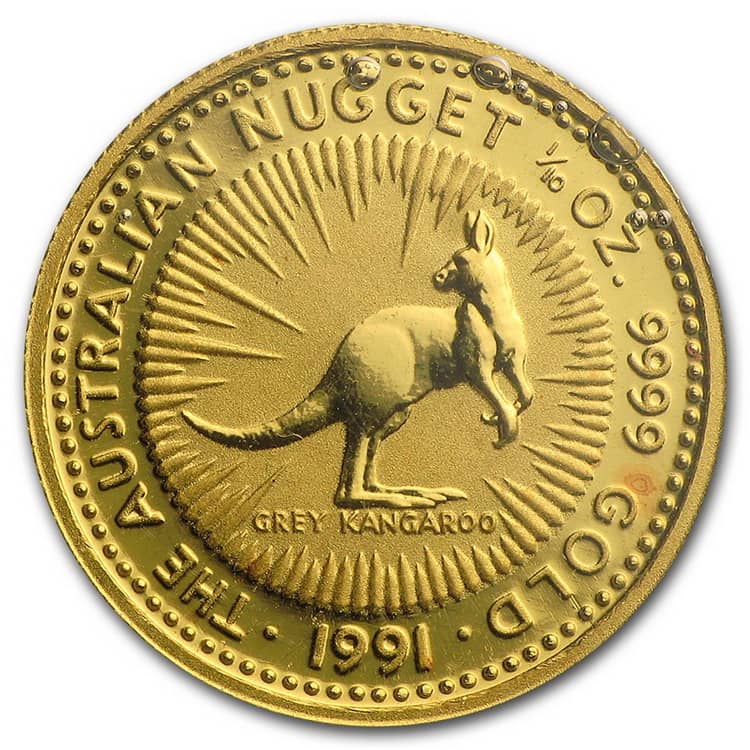
Year of minting 1992
Face value: 15 Australian dollars.
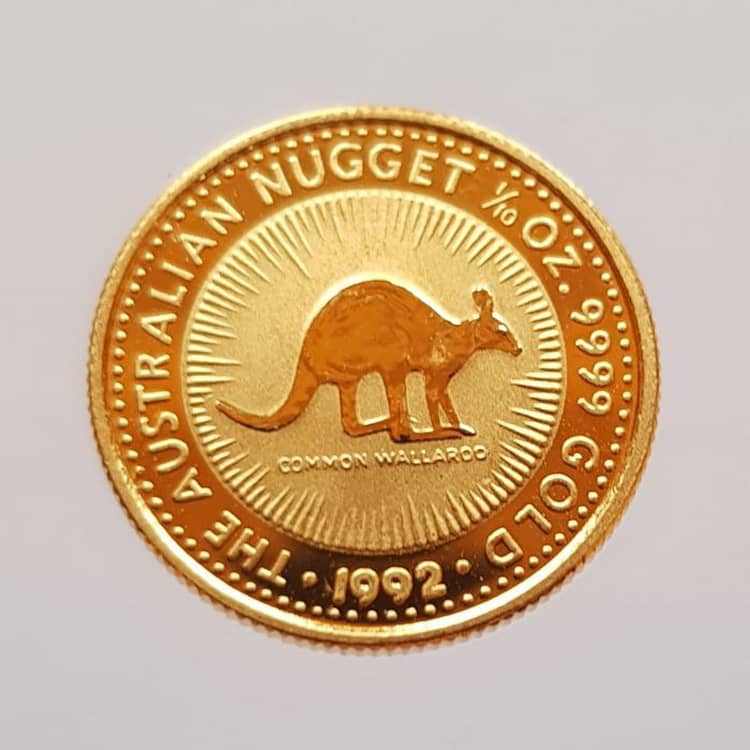
Year of minting 1993
Face value: 100 Australian dollars.
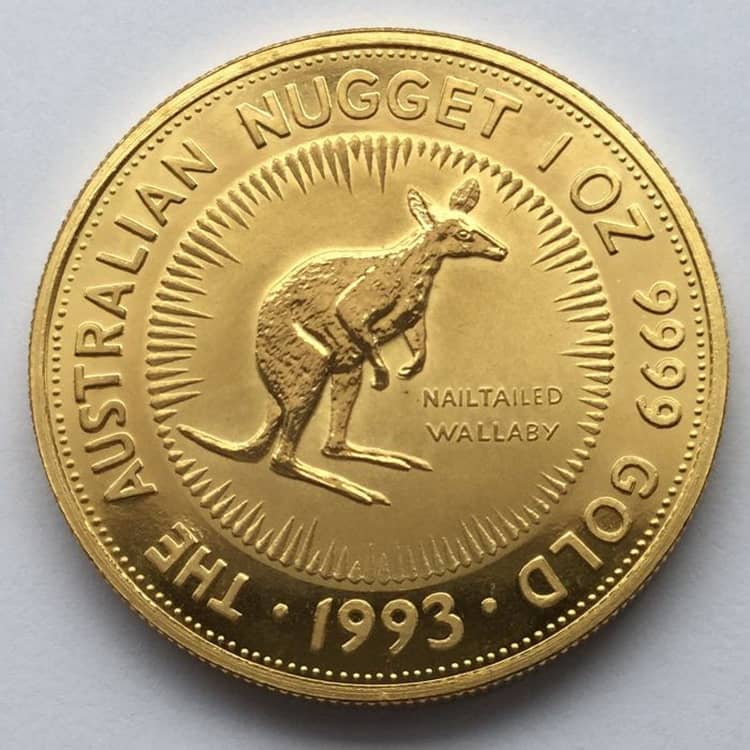
Year of minting 1994
Face value: 100 Australian dollars.
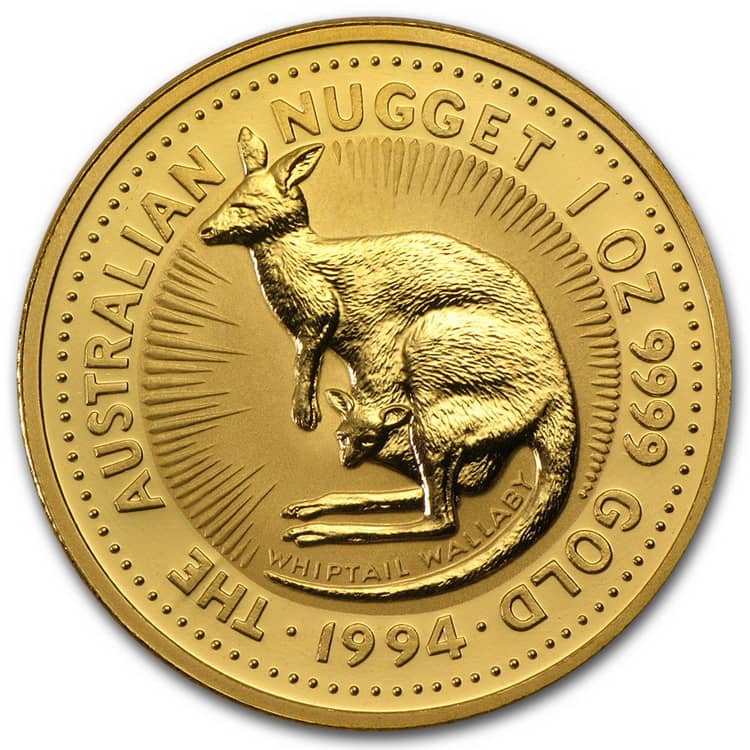
Year of minting 1995
Face value: 100 Australian dollars.
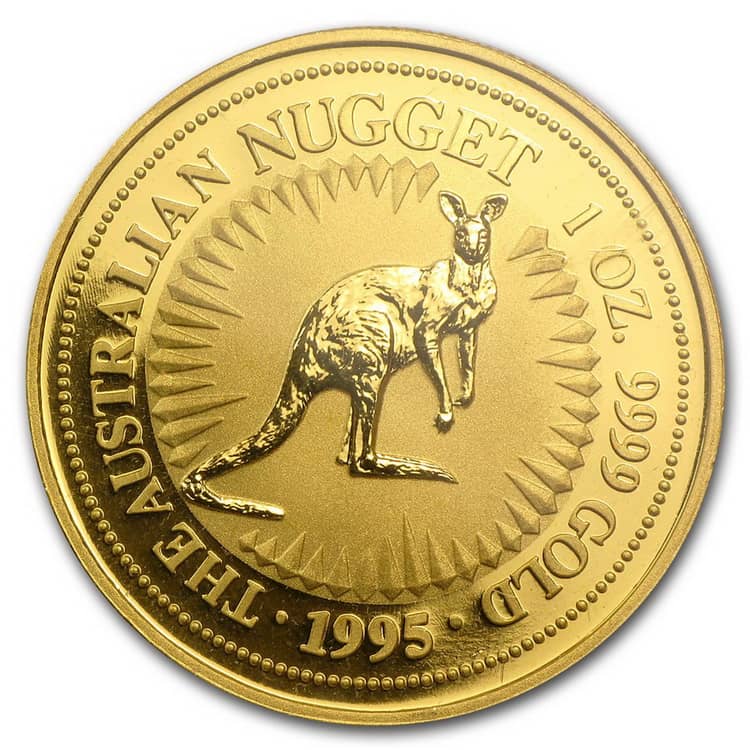
Year of minting 1996
Face value: 5 Australian dollars.
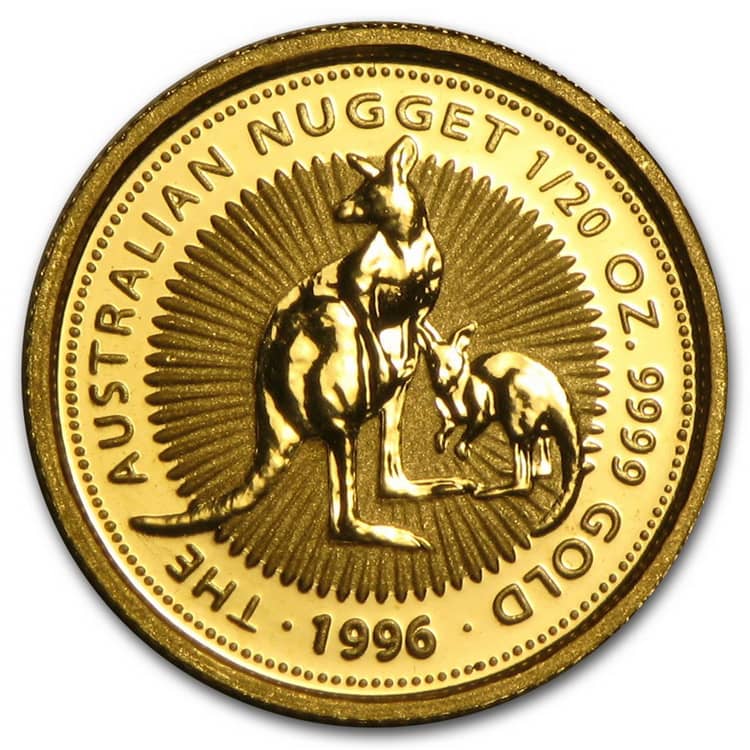
Year of minting 1997
Face value: 50 Australian dollars.
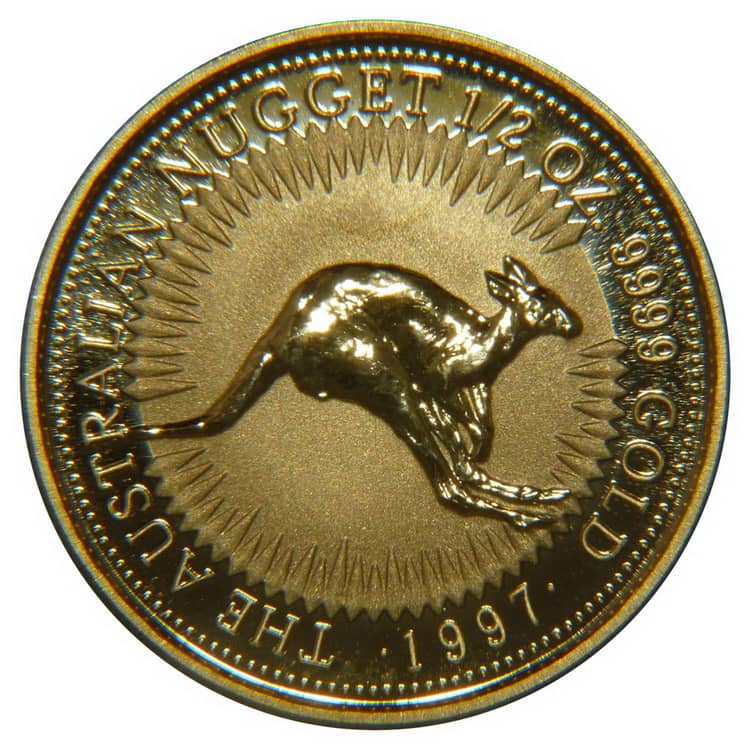
Year of minting 1998
Face value: 100 Australian dollars.
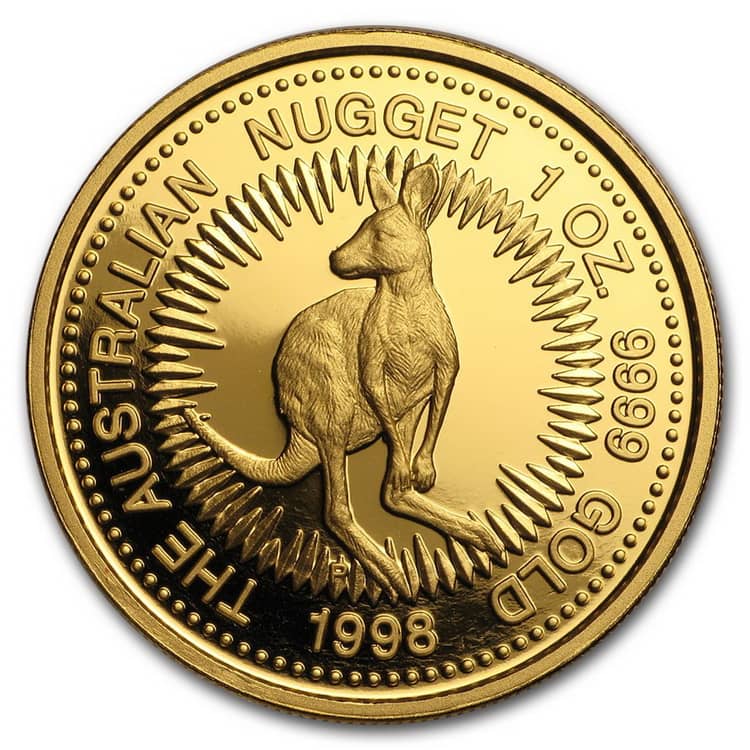
Year of minting 1999
Face value: 200 Australian dollars.
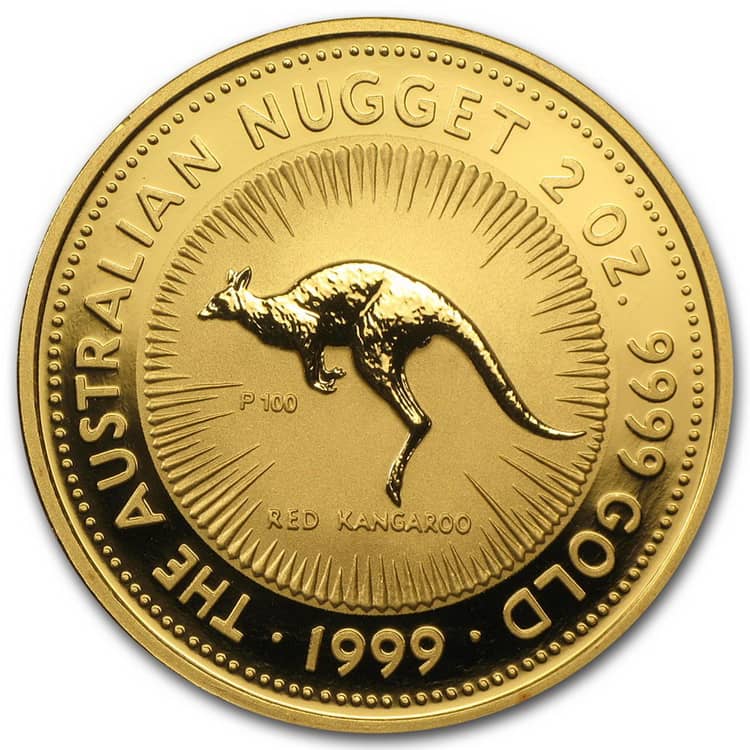
Year of minting 2000
Face value: 25 Australian dollars.

Year of minting 2001
Face value: 15 Australian dollars.
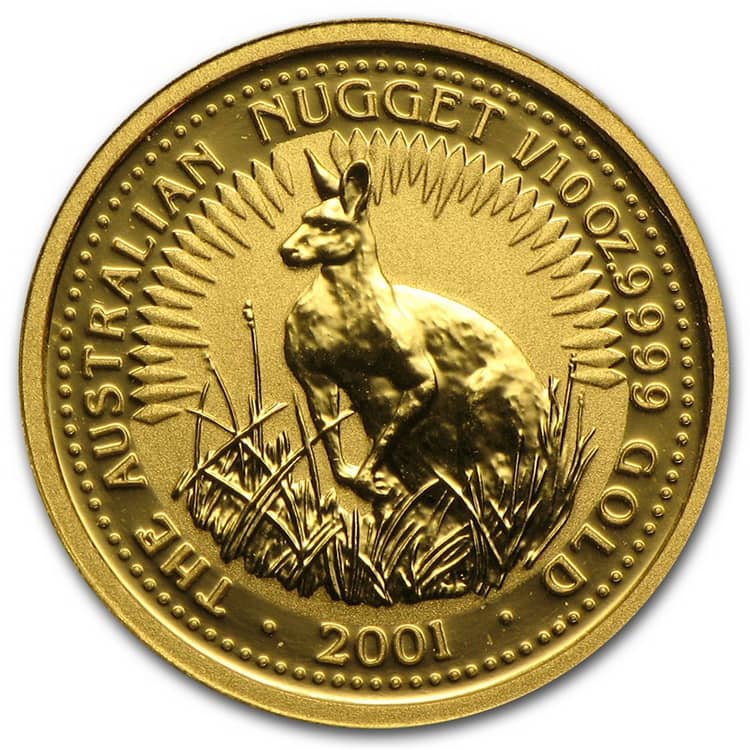
Year of minting 2002
Face value: 100 Australian dollars.
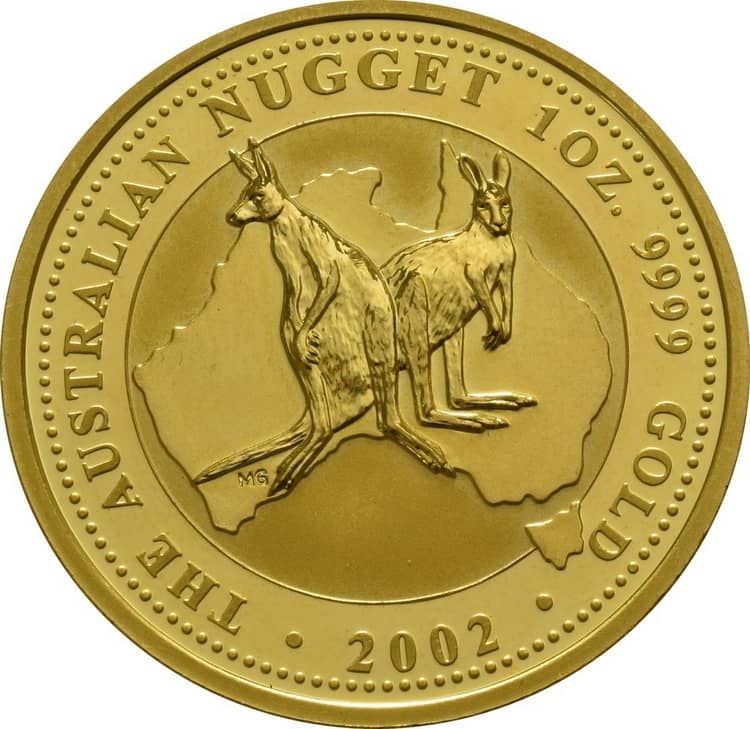
Year of minting 2003
Face value: 50 Australian dollars.
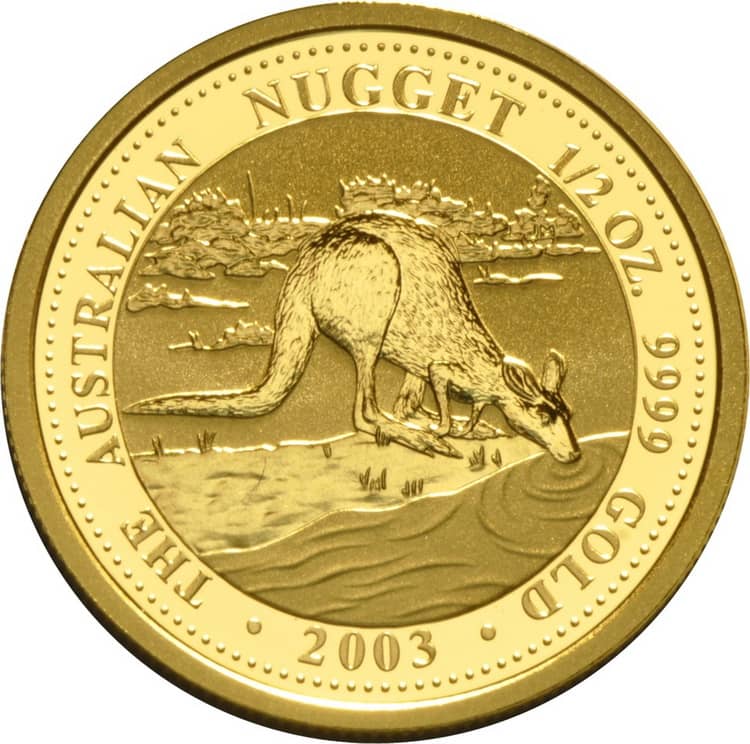
Year of minting 2004
Face value: 25 Australian dollars.

Year of minting 2005
Face value: 25 Australian dollars.

Year of minting 2006
Face value: 25 Australian dollars.
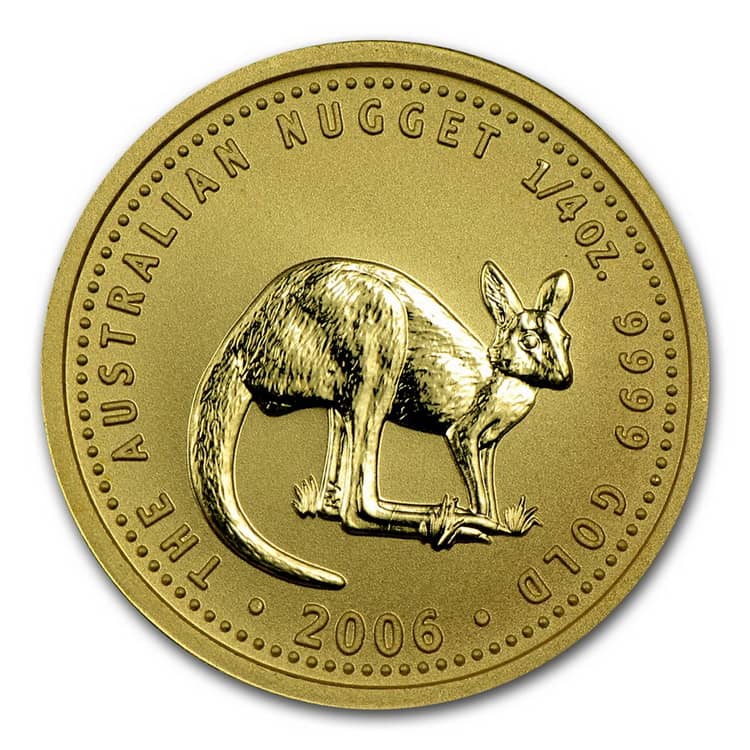
Year of minting 2007
Face value: 100 Australian dollars.

Year of minting 2011
Face value: 100 Australian dollars.

Interesting fact: The gold coin with a face value of 100 Australian, issued in 2011, is dedicated to the 25th anniversary of the famous “The Australian Nugget” series. The weight of the coin was 31.112 g, diameter 32.6 mm, and the thickness of the edge was 2.8 mm. Stuart Delvin developed the design. The real value of this coin is many times greater than its face value, and it is approximately 2,818.18 AUD.
What was this series made for
Australia has very rich deposits of gold, silver, and other precious metals. It was confirmed by the large gold nuggets found in different years of the last century, each of which received an individual name. That was precisely the reason for creating a series of gold coins with the corresponding name “Gold Nugget” or “Australian Nugget”. All coins in this series are investment ones, but at the same time, due to the uniqueness of its design and small circulation, they have become a desirable item for coin collectors.
Design
The design of all issued coins of this series had been changing from year to year, leaving only the obverse unchanged. As for the reverse, it was presented in two types – with a picture of gold nuggets and a picture of a kangaroo.
The design of gold coins of 1986-1988
- Obverse: profile of the Queen of Britain Elizabeth II in the center; inscription “ELIZABETH II AUSTRALIA” with the corresponding face value in Australian dollars; dotted line decoration.
Reverse: nugget, found in the mines of Australia in the center of the coin (the name and year of the find are indicated under the image); inscription “The Australian Nugget”; weight, fineness of gold, and year of minting; dotted line decoration.
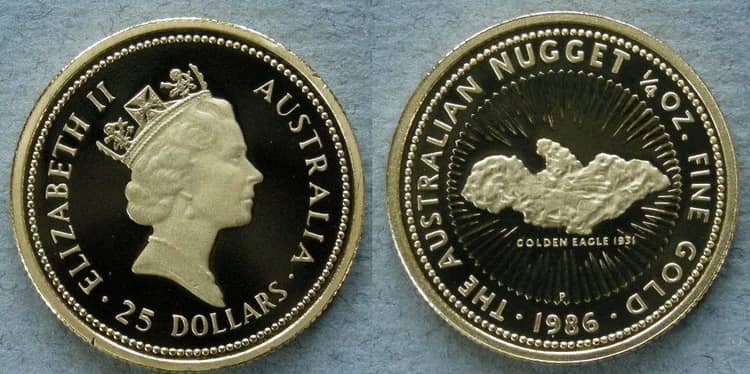
The design of gold coins of 1989-2007
- Obverse: profile of the Queen of Britain Elizabeth II in the center; inscription “ELIZABETH II AUSTRALIA” with the corresponding face value in Australian dollars; dotted line decoration.
Reverse: particular breed of kangaroos that inhabit the territory of Australia (the name is indicated near the image) in the center; inscription “The Australian Nugget”; weight, fineness of gold; year of minting; dotted line decoration.
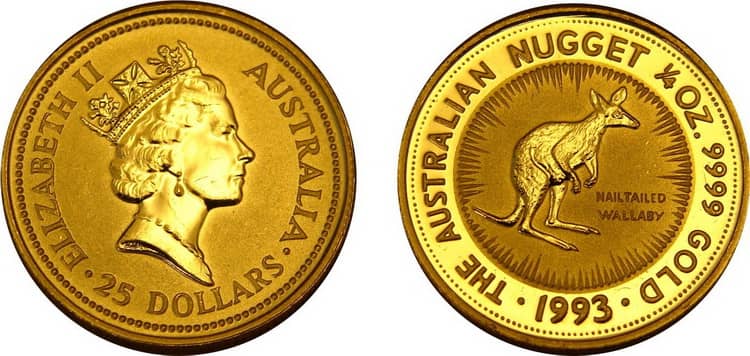
One coin of this series can be bought in an individual plastic capsule, which protects the coin from damage. Also, sets of four main denominations in a gift box were issued in minimal circulation.

Each coin has a certificate of authenticity and a unique serial number, which protects them from counterfeits.
What face values were in a circulation
The first years of the issue of the gold series of “The Australian Nuggets” only four denominations were minted:
- 15 AUD – 1/10 ounce, diameter – 16.1 mm, thickness of the edge – 1.3 mm;
- 25 AUD – 1/4 ounce, diameter – 20.1 mm, thickness of the edge – 1.8 mm;
- 50 AUD – 1/2 ounce, diameter – 25 mm, thickness of the edge – 2.2 mm;
- 100 AUD – 1 ounce, diameter – 32.1 mm, thickness of the edge – 2.65 mm
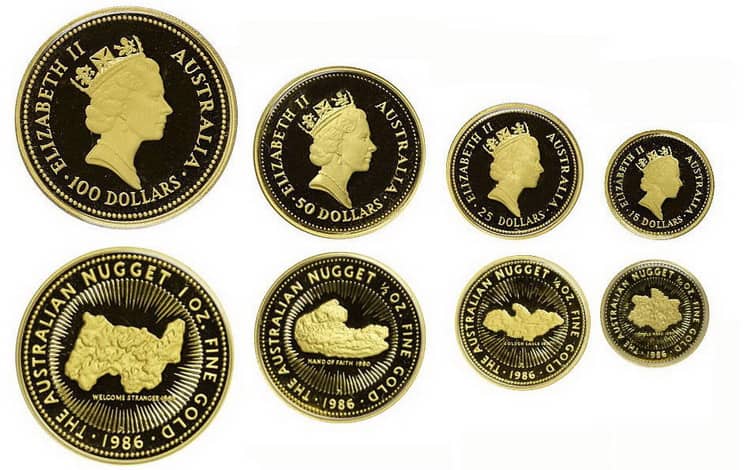
Later, since 1991 additional denominations were issued:
- 5 AUD – 1/20 ounces, diameter – 14.1 mm, thickness of the edge – 1.4 mm;
- 200 AUD – 2 ounces, diameter – 40.4 mm, thickness of the edge – 3.35 mm;
- 1,000 AUD – 10 ounces, diameter – 59.7 mm, thickness of the edge – 7.65 mm;
- 3,000 AUD – 1 kg, diameter – 74.5 mm, thickness of the edge – 15.8 mm.
Which mint issued
The only Australian mint is one of the oldest mints in the world – Perth. It is located in the state of Western Australia. It was built in 1896 near a large gold mine and was the third after the mints in Sydney and Melbourne. At that time, the mints were original branches of the British Royal Mint, since Australia was a British colony. Today the Perth Mint is entirely subordinated to the government of Australia.
The cost of coins on the market
This series of coins is not new, and it can’t be purchased at the Perth Mint directly. It can be bought at world numismatic exchanges and auctions. It is worth noting that the cost of the coins is affected not only by the cost of an ounce of gold but also by the rareness, condition and often year of minting. Even with all these factors in mind, the price of the coins of this series is several times greater than its face value. So, for example, the gold “nugget” with a face value of “25 DOLLARS” minted in 1993 can cost up to 321.14 euros, and the gold “nugget” with a face value of “100 DOLLARS” minted in 1987 can cost between 1,385.79 and 1,443.53 US dollars.
Interesting facts
- During the first days of “The Australian Nugget” series sale, more than 155,000 ounces of gold coins were sold, which was more than 103,000,000 Australian dollars.
- The anniversary one-hundred-dollar “nugget” of 2011 depicts “Welcome Stranger” nugget on its reverse, found by John Deason and Richard Oates in 1869 in the roots of a tree (in Maliagul, Victoria).
- All coins of the “The Australian Nugget” series were issued in accordance with the Currency Act of 1965, which confirms the legitimacy of this legal tender.
Comments
No commens yet.